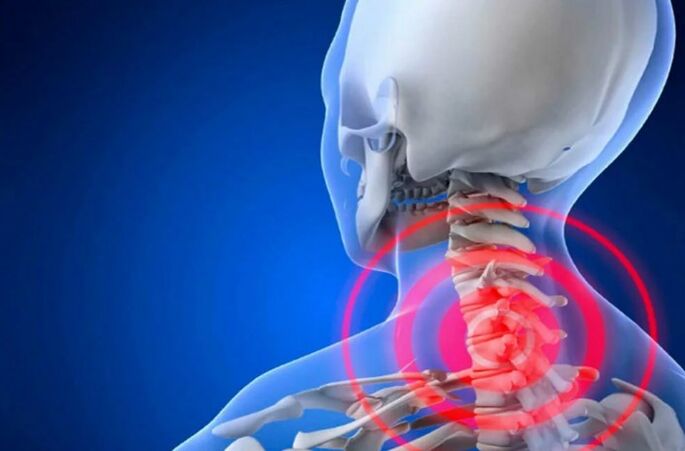The osteochondrosis of the cervical column occurs due to pathological changes in intervertebral discs. They weaken, become thinner, lose elasticity, stop protecting the vertebrae of the damage and lose the ability to provide sufficient mobility. The main danger of cervical osteochondrosis is that the disease affects the nerve endings of the spinal region, because there is a violation of the blood supply to the brain.

Types and classification
Several stages of the osteochondrosis of the cervical column are distinguished:
- First: initial changes in the cartilage fabric of the intervertebral disc;
- Second: the beginning of the thinning of the disc, a decrease in the distance between the vertebrae;
- Third: Disco destruction, the beginning of the deformation of the spine;
- Fourth: Strong deformation of the spine.
Causes
The main cause of cervical osteochondrosis is found in the structure of the spine in this area. All the vertebrae here stare and move easily even with minor loads.
Given how mobile the cervical region is, it is not surprising that the disease is so widespread.
Cause the beginning of the disease:
- Congenital anatomical characteristics (in people with a long neck, osteochondrosis occurs more frequently);
- violation of the digestibility of minerals;
- hormonal deviations;
- Lack of sufficient muscle corset on the neck and shoulders;
- hypodinamia;
- cervical lesions;
- hypothermia;
- Posture disorders;
- Overweight.

Symptoms
- Often, the first symptom of cervical osteochondrosis is a headache. It can be very strong, flowing like migraines, accompanied by dizziness and crazy.
- The appearance of "flies", dark spots, clouds before the eyes and a decrease in vision are characteristics.
- The pain in the neck with this disease gives the back of the head, front, ears, intensifies when the head position changes.
- The numbness of the hand is often observed.
- There is noise in the ears, hearing loss.
- A violation of the coordination of the movement can occur fainting.
Diagnosis
To identify the osteochondrosis of the cervical column, they carry out:
- radiography that determines the condition of the vertebrae;
- Computed tomography, to identify disk damage;
- Dopplerography that establishes blood flow disorders;
- Duplex scan that shows the status of blood vessels.
Treatment
As ambulance of cervical osteochondrosis, anti -inflammatory drugs and medications are needed. Depending on the strength of pain syndrome, local drugs (ointments and gels), tablets or injections are used.

Also designated:
- Vitamin therapy (group B vitamins);
- drugs that relieve muscle spasm,
- Condoprotector;
- Physiotherapeutic procedures (electrophoresis, paraffin, magnetotherapy and others);
- Medical Gymnastics;
- Massage and auto -masion.






















